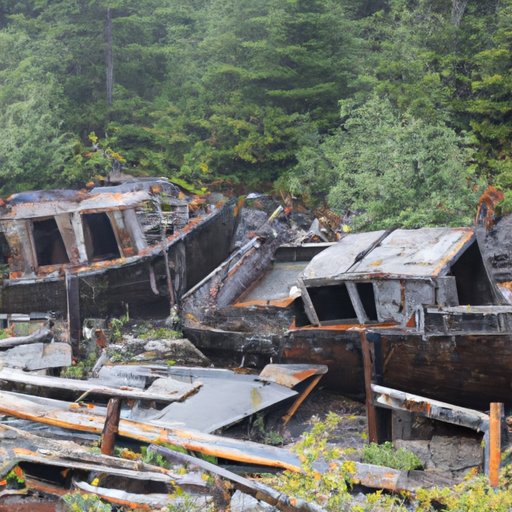Introduction
Have you ever heard of the government giving money to its citizens just for living in one of its states? This might sound strange, but this is exactly what happens in Alaska. The Permanent Fund Dividend program is unique to Alaska and has been around for over forty years. Understanding why Alaska residents receive money is essential to appreciating the program’s importance and significance.
Understanding Alaska’s Permanent Fund Dividend: An Overview of the Program’s Purpose and History
The Alaska Permanent Fund Dividend program distributes money to eligible Alaska residents annually. The program was established in 1976 and started with initial fund deposits of over $700 million from oil revenue. Since its inception, the program has distributed over $23 billion to Alaskan residents.
One reason why Alaska residents receive money is to share in the state’s wealth and resources from its natural resources. These resources, specifically oil revenue, directly fund the program. Additionally, the program aims to help mitigate the impact of high living costs caused by Alaska’s unique geography and isolation.
The Impact of Natural Resource Extraction on Alaska’s Economy and its Citizens
Oil revenue is the single most significant contributor to Alaska’s economy, making up about 85% of the state’s budget. The oil and gas industry provides high-paying jobs, a significant portion of the state’s revenue and also contributes to higher living costs. The impact of oil extraction on Alaska’s citizens is complex and has both benefits and negative consequences.
One positive of oil extraction is that it funds the Alaska Permanent Fund Dividend program. But some argue that the oil industry’s impact on the environment and local Alaskan communities outweighs this benefit.
The Alaskan Cultural Value of Sharing Resources as Exemplified by the Permanent Fund Dividend
Understanding the program’s place within Alaskan culture is essential to understanding why Alaska residents receive money. Alaska Natives, in particular, have long-standing cultural values around sharing resources within the community. The Permanent Fund Dividend program reflects these values by sharing Alaska’s wealth with both Native and non-Native residents.
Furthermore, the program emphasizes the importance of sharing the wealth of Alaska’s natural resources with future generations. The program’s endowment fund ensures that a sustainable amount of money will be available to residents for many years to come.
The Political Debate Surrounding the Permanent Fund Dividend and its Future
The Permanent Fund Dividend program’s future has been the subject of much political debate in Alaska. Some argue that the program should be reformed, as its current structure is unsustainable. Others argue that the program should remain unchanged, as it is an essential part of Alaska’s economy and culture.
One proposed change to the program would be to limit the amount of money distributed to each individual to ensure the program’s financial sustainability. However, this proposed change has been met with significant protest and pushback from Alaskan residents.
How Alaska’s Permanent Fund Dividend Helps to Alleviate Poverty and Support Low-Income Families
One of the program’s significant benefits is alleviating poverty for those who receive the dividend. For low-income families, these payments can be a lifeline, helping them pay for basic necessities like food, utilities, and rent. The Permanent Fund Dividend program is seen as a way to stimulate the economy while helping those who need it most.
A positive effect of the dividend program is the ripple effect it has on local economies. With more disposable income available, residents are more likely to spend more at local businesses and stimulate the economy further.
The Role of Oil Reserves in Alaska’s Current Economic Landscape and the Debate Over its Future Sustainability
Currently, Alaska’s oil reserves are the primary driver of its economy and fund the Permanent Fund Dividend program. However, there is an ongoing debate over the future sustainability of this model. Alaska’s oil production has been in decline for decades, and some argue that it is essential to diversify the state’s economy.
The state is exploring alternative revenue sources, including tourism and renewable energy sources such as wind and hydroelectric power. It is essential to note, though, that oil and gas will remain a key player in the state’s economy.
Conclusion
In conclusion, the reason why Alaska residents receive money is that they are sharing in the wealth of the state’s natural resources. The Permanent Fund Dividend program is a critical part of Alaska’s economy and culture, reflecting the fundamental value of sharing resources with the community, and future generations.
Understanding the program’s history, impact on poverty, cultural significance, and political debate is essential to appreciate the program’s importance and significance. We hope that this article has helped you understand why Alaska residents receive money and encourages you to learn more about the program and its future.
